#History of Argentina
Explore tagged Tumblr posts
Text

"Patricio Simonetto’s groundbreaking analysis offers lucid insights on the Argentinean trans experience and the complexities of engaging with a Latin American transgender and travesti archive. Centering trans issues and national discourses, Simonetto bravely engages the epistemic violence of the past as he documents the utopian aspirations and numerous achievements of the present. A Body of One’s Own is a major contribution."
54 notes
·
View notes
Text
It's kinda cute how Argentina just sorta reaches her hand out so she can have a border with Brasil 🥰
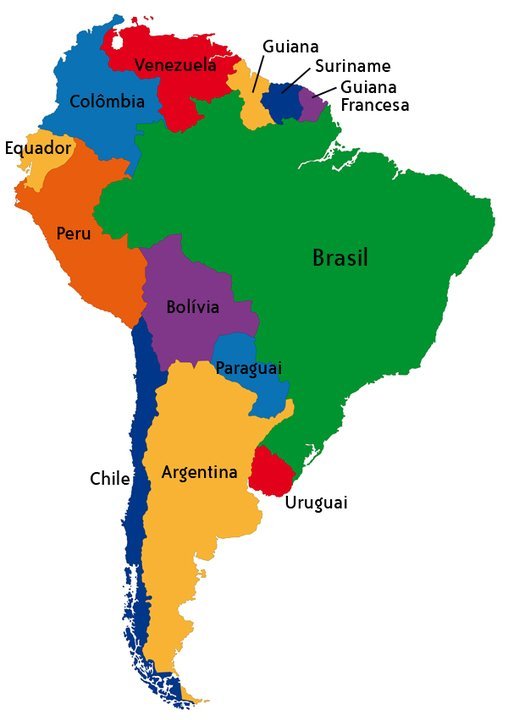
#no i do not know the history of how the borders got drawn exactly where they are#sorry if I'm ignoring a bloody massacre or something#brargentina#brasil#argentina#latam#ursal?#brarg
26K notes
·
View notes
Text









#just another lie#this was never about hamas#propaganda kills#apartheid#save palestine#israel is an apartheid state#ethnic cleansing#free palestine 🇵🇸#genocide#Argentina#Dirty War#israel is not the victim#israel funded Argentina#israel funded the murder of jews#please share#repost#seek truth#spread truth#israel lies#israel lies while Palestine dies#zionist isnt judaism#accountability isn't antisemitism#argentine junta#israel funds dictatorships#know the real history#propaganda#israel is a lie#israeli war crimes#israel is a war criminal#israel is committing genocide
2K notes
·
View notes
Text
Asfaltovenator vialidadi ponders the topic of today’s hunting lesson in Early Jurassic Argentina

#dinosaur#illustration#paleoart#paleontology#paleoillustration#paleoblr#palaeoblr#art#palaeontology#dinosaur art#dinosaurs#paleoartist#palaeoart#digital illustration#jurassic world#jurassic period#theropod#allosaur#neotheropoda#earth history#argentina#animals
622 notes
·
View notes
Note
Hello, I'd like to ask a question in good faith about israel/Oct 7
I have seen many Jewish folk and israelis say that Oct 7 was the largest Massacre since the holocaust but from my understanding a significantly larger number of Jewish folk were killed and disappeared during the dirty war in Argentina in the 70s and 80s so I was just wondering I guess about why the dirty war doesn't seem as important as Oct 7 or why barely anyone talks about the dirty war because both events are horrific but I only ever see Oct 7 discussed when it comes to more modern Jewish oppression and history
this is a really interesting question, but I'd actually never heard of the dirty war in Argentina up until this point, so I don't I have the knowledge to answer you.
After some quick reading it seems it might be due to the fact that the dirty war seems to have occured over a long span of time, while October 7th was just one day, but that's just my conclusion after some very surface level research.
I'll tag some people who might be able to answer this better than I can.
@historicity-was-already-taken @homochadensistm @native-n-jewish-thoughts @aqlstar @gay-jewish-bucky @newnitz @spale-vosver @magnetothemagnificent
#jewish#jumblr#chana talks#israel#judaism#am yisrael chai#i stand with israel#jewish history#history#asks#argentina
744 notes
·
View notes
Text

HAPPY PRIDE MONTH
As every year this is a good date to remember the daily struggle for the rights of the LBGT+ community. It is also a time to learn about the people who made it possible for us to identify ourselves as who we are today without fear of reprisals or being punished by the law. This month I got involved in the history of Argentina and its different movements for the fight for rights through the 20th century. Here I come to share some important figures, some more known than others, but obviously there are a lot that I have left out of this publication.

Sara Facio (1932-2024) & Maria Elena Walsh (1930-2011)
A couple of intellectual artists that would need a separate publication to go deeper into the subject. Sara is one of the greatest Latin American photographers who with her camera contributed to the creation of the most outstanding photographic heritage of the country. Maria Elena is a writer, singer and composer whose children's songs resonate to this day because they are much more profound than they seem and are still relevant today.
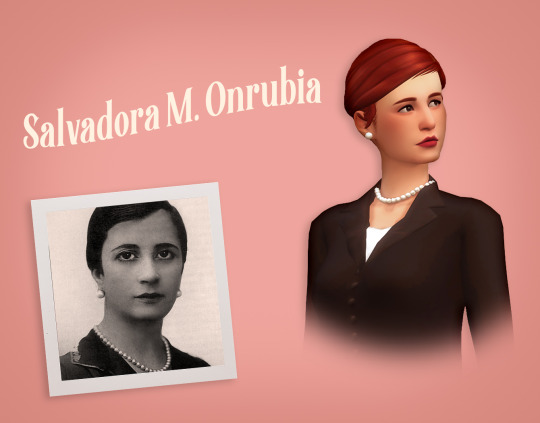
Salvadora Medina Onrubia (1894-1972)
She was a writer, militant anarchist, single mother and the first woman to run a newspaper in the country. She was the first Argentinean woman to dare to write about double sinners, lesbians and adulteresses. One of her most valued plays was Las descentradas, premiered in 1929. There, Salvadora honors her own contradictions, narrating women who question monogamous structures, marriage and the traditional family.

Malva Solis (1920-2015)
She was a transvestite writer who lived for 95 years when the life expectancy of this community in the country was under 40 years old. In 1951 founded the first trans organization on record, Maricas Unidas Argentinas. She has the oldest series of trans photographs in the country, dating from 1940 to 1980, when simply having those photographs at home was cause for being arrested. There is a documentary based on the photographs and conversations with her at her home called "Con Nombre de flor".
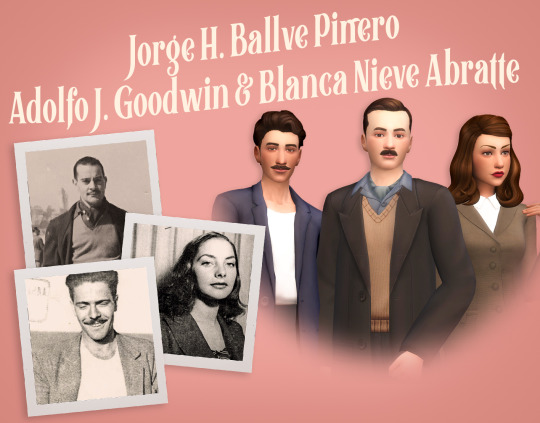
Jorge Horacio Ballve Piñero (1920-?)
Piñero was a young man from a well-to-do family of the Buenos Aires society at the beginning of the century. Together with his best friend Adolfo and Blanca, he organized gatherings in his apartment in Recoleta, and was a pioneer of male erotic photography. They mixed the privileged social class with workers, dishwashers, gas station workers, sailors and cadets from the Military College. These three characters were involved in a police case involving cadets from the military college, known as the Cadet Scandal. In the police archives remain captive the photographic collection, intended for pleasure and personal aesthetic enjoyment that tragically proved key to incriminate some friends who just wanted to have fun.

Ruth Mary Kelly (1925-1994)
She was a bisexual woman, who worked as a "Wohoo Worker". Founder of Grupo Safo in 1972, the first Argentine lesbian organization, and of the Frente de Liberación Homosexual (Homosexual Liberation Front). In 1972 she wrote Memorial de los Infiernos about her experiences as a "Wohoo" worker and bisexual, persecuted by the psychiatric-prison system.

Manuel Puig (1932-1990)
He was an Argentine writer and LGBT+ activist, author of the novels Boquitas pintadas, El beso de la mujer araña (Considered one of the most recognized LGBT works in Latin America and one of the best works in Spanish of the 20th century) etc. He also fought against authoritarianism and machismo, and was one of the founders of the Homosexual Liberation Front in 1971, one of the first associations for the defense of LGBTQI+ rights.

Mariela Muñoz (1943-2017)
She was the first transsexual woman to be recognized by the state and given a female ID card on May 2, 1997. At the age of 16 she became independent, and it was then that she began caring for children, teenagers and single mothers. She cared for children who had been abandoned by their mothers, whom she loved and cared for. She raised, during her lifetime, 23 children and 30 grandchildren. In a dispute over the guardianship of 3 children in 1993, Argentina was confronted for the first time with the debate as to whether a transsexual person "could be a mother"

Carlos Jauregui (1957-1996) & Raul Soria
Carlos was a History professor and the founder of the Civil Association Gays for Civil Rights, organizer of the first Pride march in Buenos Aires and an essential figure for Argentine activism. In 1984, he broke with the schemes by appearing in the magazine Siete Días embracing the activist Raul Soria, a homosexual person assumed his sexuality in a public way for the first time. He believed that media visibility is fundamental for LGTB people. Leaving aside the fear and silence that other generations suffered for years. In 1985, Raul would present himself as the first gay candidate for congressman in the country.

Roberto Jauregui (1960-1994)
Brother of Carlos, was a journalist, actor and the first activist for the rights of people with HIV in the country. In 1989 he exposed the inequality in access to treatment at that time due to the price of medication. He played a central role in marches, actions, talks and interviews to demand human rights for people living with the virus. A well-known phrase of his is "Showing one's face is not easy in a society that discriminates, censures and separates".

Cris Miró (1965-1999)
Cris was the first visible trans people that appeared in the media and broke with the "transvestite" paradigm. A dental student, she got involved in the artistic underworld and later studied classical dance, musical comedy and acting. Her career was meteoric: the popularity of revue theater catapulted her to the small screen where she became a sought-after figure in the most popular programs. On June 23rd, a series about his life inspired by his biography was released, available on Prime Video.

Alejandro Vannelli (1948-) y Ernesto Larresse (1950-)
They were the first couple in the province of Buenos Aires to get legally married on July 30, 2010 after the Equal Marriage Law was passed. They met in 1976 because of a triple A bomb in the theater where Larresse was performing with Nacha Guevara, then he joined the cast of Vannelli. At the beginning they did not like each other because of Vanelli's appearance as a wealthy young man and Larresse was the opposite, but opposites attracted and they were a couple for 34 years.

Norma Castillo (1943-) y Ramona "Cachita" Arévalo (1943-2018)
They were the of South America's first gay marriage on April 9, 2010. Norma and Ramona were married to two Colombians, who were cousins to each other. During the dictatorship they both went into exile in Colombia and there they fell in love and lived their romance clandestinely, until Cachita separated and Norma was widowed by her husband. They lived their love freely and even opened an LGBT discotheque in Colombia. In 1998 they returned to Argentina and began to work in sexual diversity organizations.
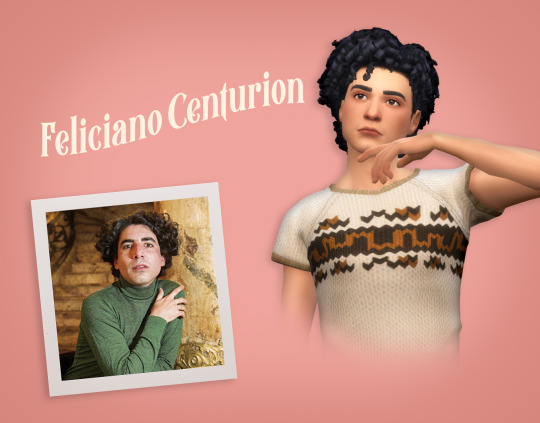
Feliciano Centurión 1962-1996)
He was a visual artist, a Paraguayan painter professionally trained in Argentina. He grew up in a home dominated by women, where he learned to sew and crochet. Inspired by queer aesthetics and folk art, he used to incorporate household textiles and references to the natural world. She handled kitsch art and languages not considered high art with a great deal of knowledge and sensitivity.

Humberto Tortonese (1964-) , Alejandro Urdapilleta (1954-2013) & Batato Barea (1961-1991)
Batato was an actor and "literary transvestite clown" as he called himself, one of the most important personalities of the underground theater movement of the post-dictatorship years. Together with Alejandro Urdapilleta and Humberto Tortonese, revolutionized the underground scene of the 80's - in places like the Parakultural. They disguised themselves, wore make-up and improvised delirious and strident scenes for the decade.

Sandra Mihanovich & Celeste Carballo
Sandra and Celeste are two singers who were visibly lesbians during the 80s and early 90s. Together they released the albums "Somos mucho mas que dos" and "Mujer contra mujer" which became a symbol of belonging for the whole LGBTQ arc in our country. They managed to be part of the rock scene, an area historically dominated by men. Sandra among all her songs is "Soy lo que soy" released in 1984 composed by Henry Jerman.
#Argentina LBGT#Lgbt Latin America#ARG Queer#lgbt#lgbt love#gay pride#bisexual pride#lesbian pride#pride month#the sims 4#sims 4 pride#sims 4 edit#sims 4 render#ts4 lgbt#lgbt history#queer history#victorian lgbt#PrideFlagLegacy#pride flag legacy challenge#ts4 historical#sims 4 historical#Cris Miro#Sandra Mihanovich#Celeste Carballo#Maria Elena Walsh#Sara Facio#Ballve Piñero#Carlos Jauregui#Roberto Jauregui#Feliciano Centurión
303 notes
·
View notes
Text

The media describes October 7 as the “worst massacre of Jews since the Holocaust.” Only it’s not true. The worst massacre of Jews was in Argentina, and it was enabled by Israeli weapons.
Claims that the Palestinian offensive into Israel on October 7, 2023, caused the worse massacre of Jews since the Holocaust, are simply not true. The 1970s death toll of Jews during Argentina's dictatorship, that was armed with Israeli weapons, was far higher.
As many as 30,000 “disappeared” under Argentina’s right-wing dictatorship, which lasted from 1976-1983. This period is known as the Dirty War, a term that has come under criticism from Argentines, as it wasn’t really a war but mass state-sanctioned terrorism and murder.
The victims were political dissidents, primarily left-wing subversives that were critical of the regime. Jews were over-represented among them.
The death toll of Jews during the Dirty War ranges between 1,900 - 3,600. This number far exceeds the 1,139 Israelis, including 764 civilians and 373 security personnel, that were killed in occupied Palestine on Oct 7.
Jews were targeted because of the Plan Andinia conspiracy theory, which claimed that Jewish communists wanted to create a second Israel in Patagonia, and the junta tortured people into “admitting” that the plan was real.
Argentina’s right-wing dictatorship was also supported by Israel. In 2016, a group of Argentine-Israelis filed a freedom of information request demanding that Israel release documents related to its involvement in supporting the Dirty War.
The declassified documents confirm that Israel supplied $700 million in weapons and training to Argentina’s military junta, which then disproportionately targeted and massacred Jewish dissidents.
Israel has a long and checkered history of funding brutal dictatorships across Latin America and around the world.
red.
211 notes
·
View notes
Text
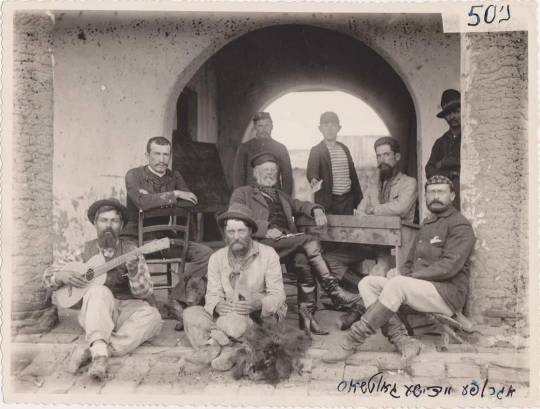
Yiddishe Gauchos, Argentina, early 20th century
At the end of the nineteenth century, thousands of East European Jews fled to Argentina from persecution and pogroms. These Jews became ranchers and farmers in the pampa, and were called Yiddishe (Jewish) Gauchos. The Yiddishe Gauchos, like their native counterparts, dressed in black hats and wide belts. They adapted the local customs, built communities and gave the pampa its own uniquely Jewish character.
962 notes
·
View notes
Text

Most common way to say "car" in Spanish and Portuguese
auto: Bolivia, Chile, Uruguay, Paraguay, Argentina, Rio Grande do Sul
outo: Aruba, Curacao, Bonaire (Papiamento)
carro: Mexico, Guatemala, El Salvador, Panama, Brazil, Costa Rica, Honduras, Nicaragua, Belize, Colombia, Venezuela, Ecuador, Peru, Angola, Portugal, Mozambique, Guinea-Bissau, Cabo Verde, Sao Tome, Goa, Timor-Leste, Macau, Cuba, Dominican Republic, Puerto Rico, Southwest USA, Florida
coche: Spain, Equatorial Guinea, Western Sahara, Philippines (Chavacano), Mexico
máquina: Cuba
#map#maps#cartography#usa#latin america#mexico#europe#history#spain#langblr#world#argentina#brazil#portugal#hispanic#iberian#iberia#romance#language
99 notes
·
View notes
Text

Empty Sneakers Dance in a Stop-Motion Film Honoring the 20th Anniversary of a Buenos Aires Tragedy
76 notes
·
View notes
Text

“A major contribution to queer studies, Fernández-Galeano’s dual focus on Argentina and Spain adds an original lens to a subject that is traditionally approached through a national perspective. His creative analysis of a multiplicity of subjects, including tourism, fashion, and military culture, and his smart combination of archives goes beyond state policing and repression to offer a rich understanding of the desires, rules, and aims of queer communities on their own terms.”
24 notes
·
View notes
Text

DI MARIA AND MESSI LIFTING THE TROPHY TOGETHER
I PRAYED FOR TIMES LIKE THIS😭😭😭😭
#I’m sorry otamendi but u joined the team like yesterday in comparison#this just means more to me with them both considering their history#Argentina#Argentina nt#copa america#lionel messi#angel di maria
165 notes
·
View notes
Text

Leonor Fini
self-portrait
#leonor fini#self portrait#art#autoportrait#painting#drawing#art history#portrait#fineart#surrealism#argentina
106 notes
·
View notes
Text



Photos of a 20 year old Lionel Messi with 6 month old Lamine Yamal and Yamal’s mother, Sheila Ebana taken in September 2007 in Barcelona, Spain during a photo session in the dressing room of the Camp Nou stadium. In 2007, Messi had began his Barcelona career in 2004 at age 17 and now Yamal, starting at 15 (now 17) has become a football sensation for Spain and Barcelona.
📸 Joan Monfort
#football#european football#euro cup#euro 2024#copa america#copa américa 2024#euros 2024#euros#Messi#lionel messi#lamine yamal#history#football history#cool things#barcelona#spain mnt#argentina nt#spain nt#legendary#photography#national football league
116 notes
·
View notes
Text


both messi and lamine scoring their first goals of their tournaments tonight
#i’m not comparing just sure is ironic seeing history rhyme#lionel messi#lamine yamal#argentina mnt#spain mnt#copa america#euro 2024#euros
112 notes
·
View notes
Text
For all those accusing Argentina of racism:

#meme#memes#shitpost#shitposting#humor#funny#lol#satire#funny memes#irony#fact#facts#funny humor#funny meme#comedy#argentina#joke#parody#history memes#history#mixed marriages were also legal and normal in the rest of Latam#american civil war#usa
95 notes
·
View notes